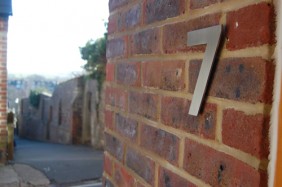If you cannot find your question or answer in the list below, please do not hesitate to contact us:
Why use ecotects?
 As RIBA Chartered Architects, we can help you to realise your objectives and guide you through the design and construction process. We provide a service that extends well beyond producing a set of drawings – we will handle the paperwork, bring value for money, peace of mind and imagination to your project while keeping it on track. And, of course, as part of the package, we will endeavour to incorporate sustainability into every aspect of high quality project design.
As RIBA Chartered Architects, we can help you to realise your objectives and guide you through the design and construction process. We provide a service that extends well beyond producing a set of drawings – we will handle the paperwork, bring value for money, peace of mind and imagination to your project while keeping it on track. And, of course, as part of the package, we will endeavour to incorporate sustainability into every aspect of high quality project design.
Selecting the right architect is one of the most significant decisions you can make.
Will the architect be able to tell me whether it is possible to do what I have in mind?
 Your architect will initially review the options with you and discuss the implications of each option. However, it may not be possible to give you an instant answer to a complex problem, or whether you will be granted planning permission.
Your architect will initially review the options with you and discuss the implications of each option. However, it may not be possible to give you an instant answer to a complex problem, or whether you will be granted planning permission.
What about planning permission?
Your local planning authority is responsible for deciding whether a proposed development should be allowed to go ahead. This is called planning permission. Most new buildings, major alterations to existing buildings and significant changes to the use of a building or piece of land need this permission.
What is permitted development?
Certain minor building works – known as permitted development – do not need planning permission. This is because the effect of such developments on neighbours or the surrounding environment is likely to be small and include limits on height and volume. There are different rules for Listed Buildings, Conservation Areas, Areas of Outstanding Natural Beauty, National Parks, Green Belts, monuments or buildings of historical or architectural interest etc.
Although it is always best to check with your local authority, the latest information can be seen on the Planning Portal. Your architect can help you with this issue.
How do I make a planning application?
Ecotects will first develop a brief with you, then prepare sketch proposals through to a detailed design and submit an application for planning permission.
Will the architect know my local council?
 Quite possibly, especially if it is within a reasonable distance of the practice.
Quite possibly, especially if it is within a reasonable distance of the practice.
Can you explain Building Regulations?
In very general terms, planning rules determine whether you are allowed to go ahead with a building project and Building Regulations set standards for the design and construction of buildings to ensure the safety and health for people in or about those buildings. You can read more information on the Planning Portal.
How do I apply for Building Regulations Approval?
There are 3 ways to apply for approval:
Building Notice – Plans are not always required with this process so it is quicker and less detailed than the full plans application. It is more appropriate and quicker for small works. If you go down this route, you need to be sure that the work will comply with the Building Regulations or you will risk having to correct any work you carry out if your local authority requests this. In this respect, you do not have the protection provided by the formal approval of ‘full plans’.
Full Plans – The application needs to contain detailed plans and other information, preferably well before work starts on site. A full plans approval notice is valid for three years from the date of deposit of the plans.
Regularisation – Where works have been carried out without approval the owner may be prosecuted. However to help people who wish to rectify the situation, there is a process called Regularisation.
Your architect can explain the process in more detail and you can read more information on the Planning Portal.
Party wall agreements
A wall is a “party wall” or “party fence wall” if it stands astride the boundary of land belonging to two (or more) different owners. If you want to carry out works which affect any part of a party wall, then under the Party Wall Act 1996 notification must be given to the adjoining neighbour affected at least 2 months before the planned starting date for work. This notice is only valid for just one year. It is best in most situations to appoint a Party Wall Surveyor to advise you on what can be a complicated process. See also Party Wall etc Act 1996: explanatory booklet, produced by the DCLG.
How do I find the right builder?
A personal recommendation is one of the best ways to start your selection process. Ask for a viewing of recent projects and check out the company thoroughly, from Company’s House, to Google to word of mouth. We recommend that you go out to competitive tender to at least three builders. A good builder should not have to cold call for work so beware unsolicited emails and calls, and anyone promising comparatively reduced completion schedules and budget pricing. A busy builder is often a sign of a good builder.
We can help with the process and also have a list of contractors with whom we have worked successfully in the past.
What drawings and other information will the builder need?
The type of drawings a builder needs will vary with the size and complexity of the project, from basic building regulation drawings to highly detailed construction drawings, specifications, schedules of work and bills of quantity. Your architect will discuss this with you well before work starts and, in many cases, before a builder has even been appointed.
Does the architect help estimate the cost of the building?
 It is important to tell your architect what your budget is from the start, so we can then use our experience to design within it to some extent. The more information we have, the better. There are many factors which have direct implications on the cost from the complexity of the design, the size, location, scope of the works and level of specification. Complex projects may require a quantity surveyor to make accurate estimations of cost. Fixtures and fittings choice will have a profound effect on your budget – a luxury fit-out could be five to ten times the cost of basic.
It is important to tell your architect what your budget is from the start, so we can then use our experience to design within it to some extent. The more information we have, the better. There are many factors which have direct implications on the cost from the complexity of the design, the size, location, scope of the works and level of specification. Complex projects may require a quantity surveyor to make accurate estimations of cost. Fixtures and fittings choice will have a profound effect on your budget – a luxury fit-out could be five to ten times the cost of basic.
We recommend that you agree all details with your builder up front – changes of mind and additions mid-build can see costs escalating dramatically. A good set of drawings will illustrate the details and some builders may request a specification – a complete list of everything from bricks to light switches and taps.
Do not forget you also have to include professional fees – architect, quantity surveyor, etc -within your budget. Plus, of course, statutory fees such as Building Regulations, Planning and VAT if appropriate.